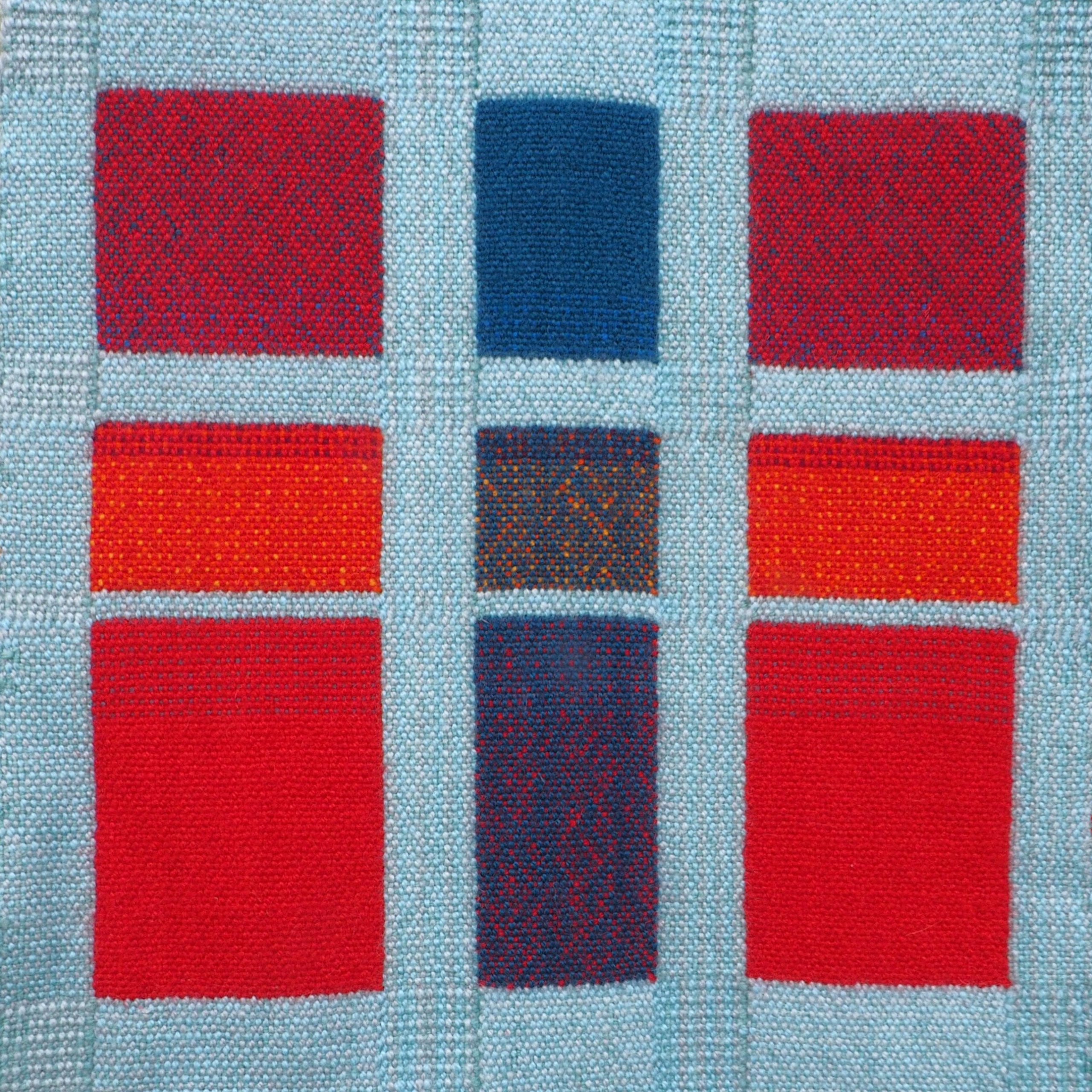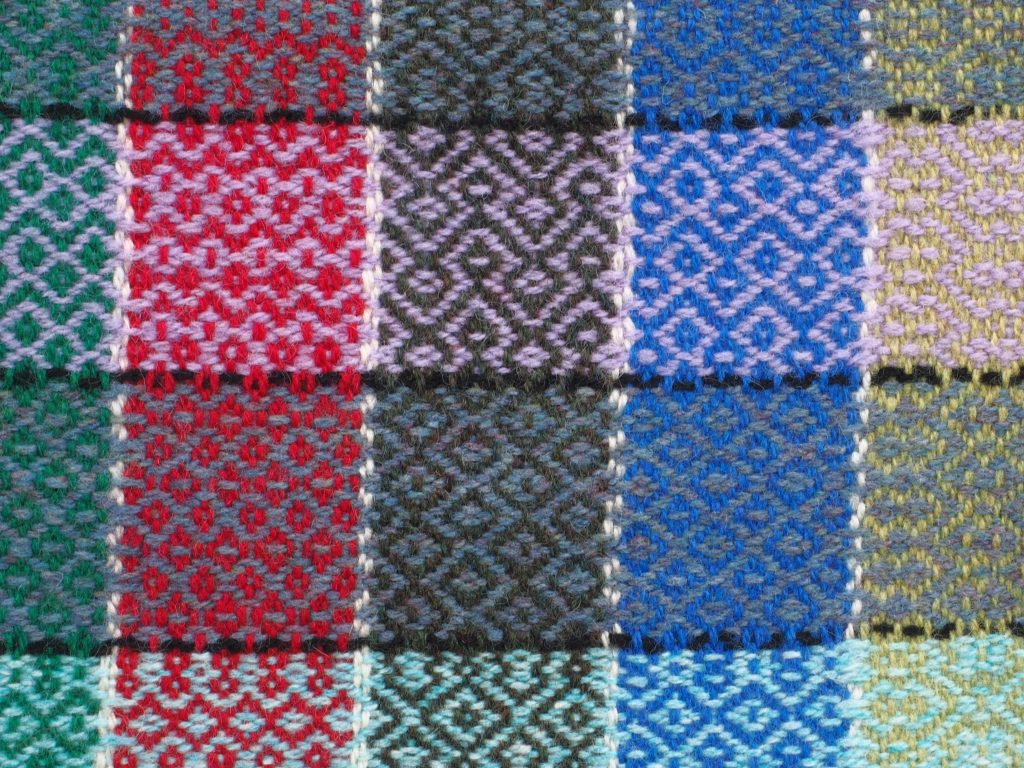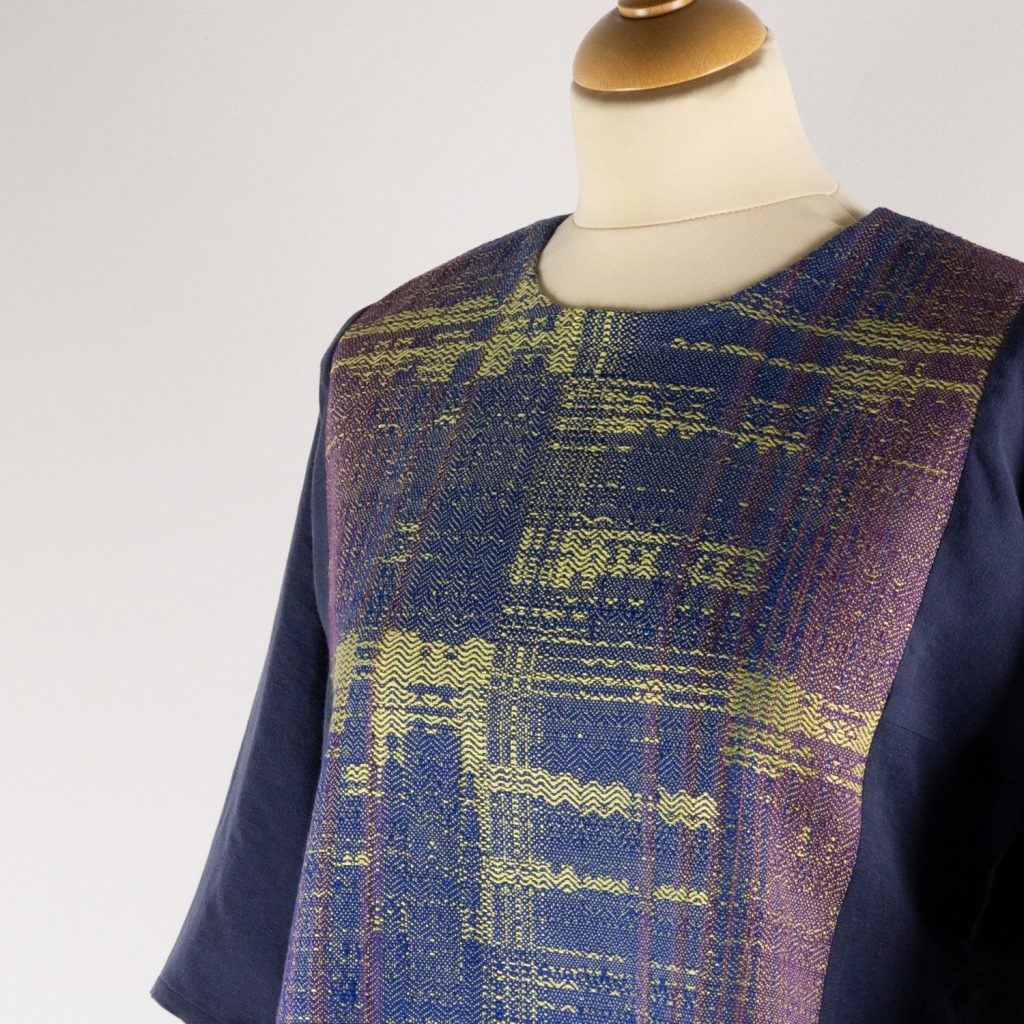
Weaving is mostly learned by ‘doing’, and that needs time, access to equipment and a good teacher. Group tuition obviously brings the individual cost down but not many weavers have the spare studio space or guest equipment to support this. Much of my own learning has been through residential courses, self-study and trial & error using whatever gear is to hand.
David Gurney – Tweed weaver

Russell Gurney Weavers made tweed clothing, accessories and bespoke tartans near Turriff in Aberdeenshire.
David collaborated with a local farm B&B who provided accommodation, food and teaching space. He had six Ashford table looms available for the weaving students. Four days gave enough time to wind a warp, dress your loom, weave a (surprising!) length of cloth, and make and fix a few mistakes. I’d recently acquired the Lillstina so this was a great confidence booster for working with my own loom!
The twill sampler from this workshop still gets used as a reference.
After that, there was a bit of fun with colour, using big bundles of contrast-y weft in a hopsack weave. (I’m getting tea-cosy, old bus seats, grandad’s slippers…)

Jan Beadle – Weave tutor

The West of Scotland Guild of Weavers Spinners and Dyers invited Jan Beadle from Carlisle to give a workshop on how energetic materials like elastane or over-twisted yarn can add 3D effects when a cloth is wet- or heat-finished.
For best use of time on her one-day workshops, Jan tends to bring looms that are already warped, ready to demonstrate and try out; plus lots of woven examples for “show & tell”.
I recently used this technique in a spun-silk / silk-chenille scarf where an occasional pick of fine lycra adds a soft ripple to the interleaved twill.
Heriot-Watt School of Textiles and Design

Heriot-Watt’s School of Textiles and Design in Galashiels used to host week-long summer residentials in weave, knit, print and garment construction.
My first encounter with multi-shaft dobby looms and this very inspiring setting was in 2015. Just “wow”, we had access to all the facilities of a university campus, plus the most amazing yarn library.
In the weave shed on the top floor of the High Mill, the excellent Marnie Collins put up with some wacky project ideas over the years, and very patiently helped me make some of them real…
This 2017 exercise, based on Joan Eardley’s Summer Fields, tries to combine a painterly warp, clasped wefts for the tapestry, and a corduroy twill for a bit of texture. There’s probably far too many techniques going on at once here, but the piece does sort-of hang together (if you half-close your eyes!)

Cally Booker – Complex weaver

Cally Booker from Dundee has a quite awesome understanding of complex weave-structures, to the point where she can ‘riff’ on the peg plan… changing it on the hoof while weaving a piece. The illustration here is from an artist collaboration that used natural sound as its inspiration.
In 2022, I signed up for Cally’s course called “Mechanical Magic”, all about taking the mechanical dobby loom beyond the standard weave structures. Those online sessions on zigzags, curves, units and blocks helped challenge my terror of complex structures, and shows how much an expert tutor can help break a log-jam…